|
|
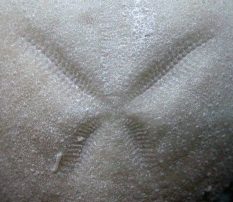 B B |
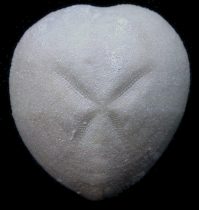 C C |
|
Micraster (Agassiz) |
The most characteristic of the Chalk echinoids. The genus Micraster contains numerous species and sub-species which form a complex lineage ranging through the White Chalk. This lineage is of great biostratigraphic importance, that is, the various forms can be used to recognise specific horizons within the chalk. Some example forms are shown below, but a full appraisal of the Micraster-group is beyond the scope of these pages.
|
|
 B B |
 C C |
1). Micraster normannaie (Hope Gap, Lewes Nodular Chalk Formation, Randell Collection, RR1173). (A) Oral (under) surface, anterior (front) towards top of image. The opening is the peristome (x1.5). (B) Detail of the distinctive ambulacral 'petals' on the apical (upper) surface (x3). The small apical disc at the junction of the 5 'petals' is comprised of porous plates which release reproductive fluids and regulate water intake for the hydrostatically operated tube feet. (C) Apical surface, anterior end towards top of image (x1.5).
|
|
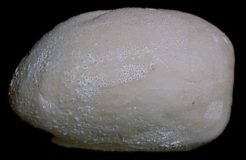 B B |
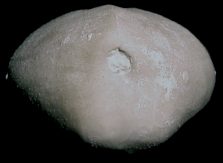 C C |
2). Micraster normannaie, views of the above specimen. (A) Anterior (front) view. The opening bottom centre is the peristome. (B) Lateral (side) view, anterior end to the left. (C) Posterior (rear) view. The central opening is the periproct.
|
|
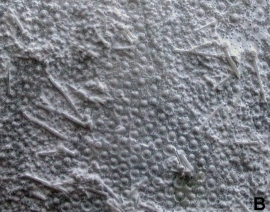 |
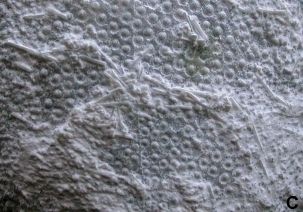 |
3). Micraster coranguinum, White Chalk, Shoreham Cement Works, Randell Collection, RR0878. (A) The oral surface, which unusually retains a partial compliment of spines (x1.3); (B, C) details of the oral surface and spines (x5).
|
|
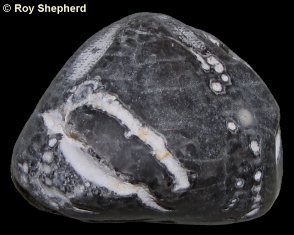 B B
|
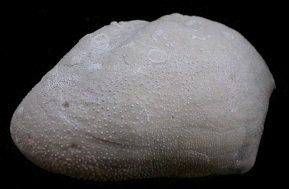 C C |
4). Micraster with various lateral profiles. (A) Micraster sp. displaying a highly flattened 'M. normanniae' - type profile (x1.5, Hope Gap, Lewes Nodular Chalk Formation (Beeding Beds), Randell Collection, RR1582); (B) 'Micraster' gibbus with a conical 'gibbus' - type profile, with the tallest point at the centre of the petals, sloping down steeply towards the peristome and periproct (x 1.5, flint internal mould, Seven Sisters, Roy Shepherd collection); (C) Micraster coranguinum (rostrata?) with a distinctly arched ' M. c. rostrata' - type profile (x1.5, Seaford Chalk, near Birling Gap, Randell Collection, RR1334).
|
|
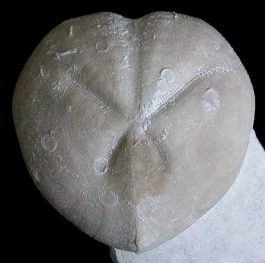 B
B |
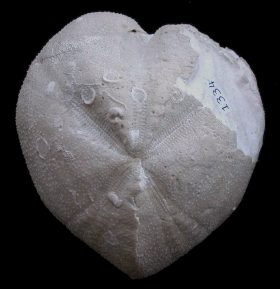 C C |
5). A selection of Micrasters viewed apically. (A) Micraster coranguinum, with the classic Micraster profile (x1.3, White Chalk, Shoreham Cement Works); (B) Micraster sp. displaying a highly rounded 'M. decipiens' - type profile (x1.5, Hope Gap, Lewes Nodular Chalk Formation (Beeding Beds); (C) Micraster coranguinum (rostrata?) (x1.5, Seaford Chalk, near Birling Gap). All Randell Collection, (A) RR0878, (B) RR1582, (C) RR1334.
|
|
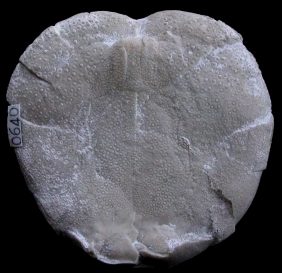 B B |
6). Micraster coranguinum (x1.5, Newhaven Chalk, Peacehaven, Randell Collection, RR0640). A thin-shelled form, prone to crushing.
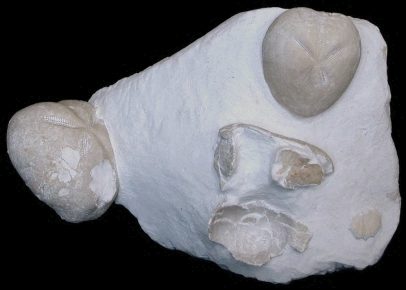
7). A block with several Micraster specimens (x1, Hope Gap, Lewes Nodular Chalk Formation, Randell Collection).